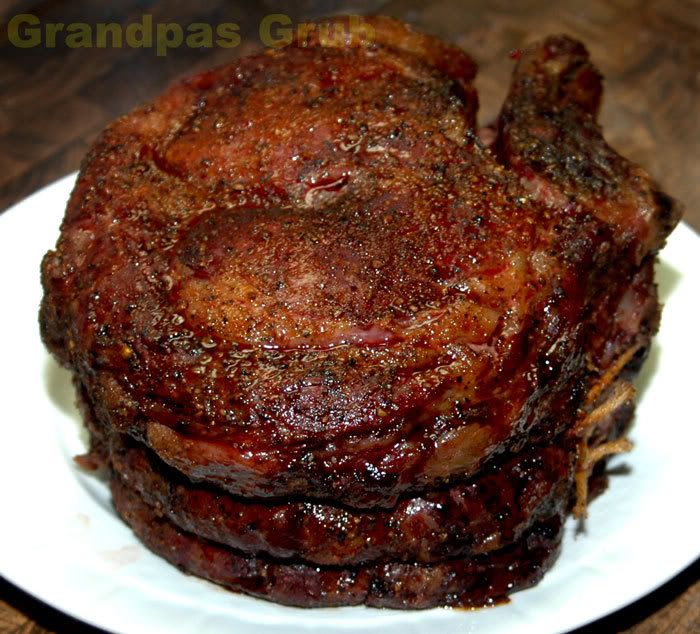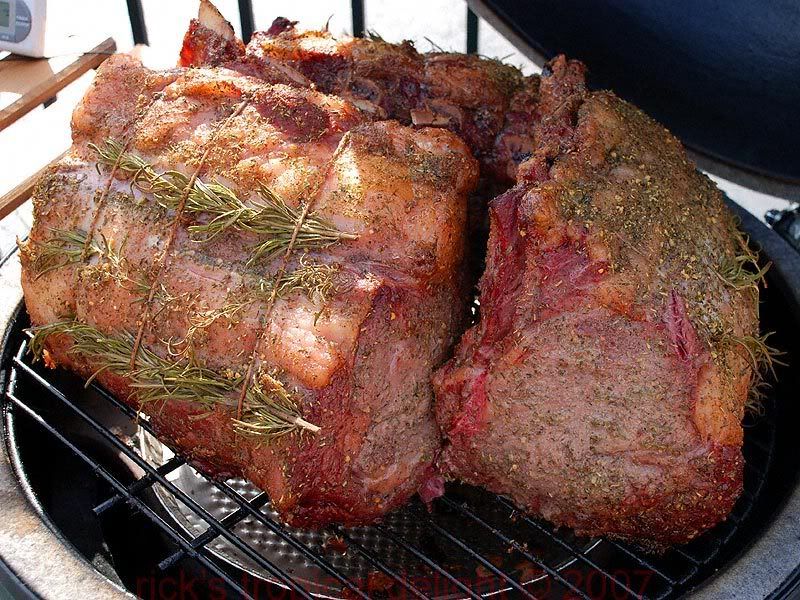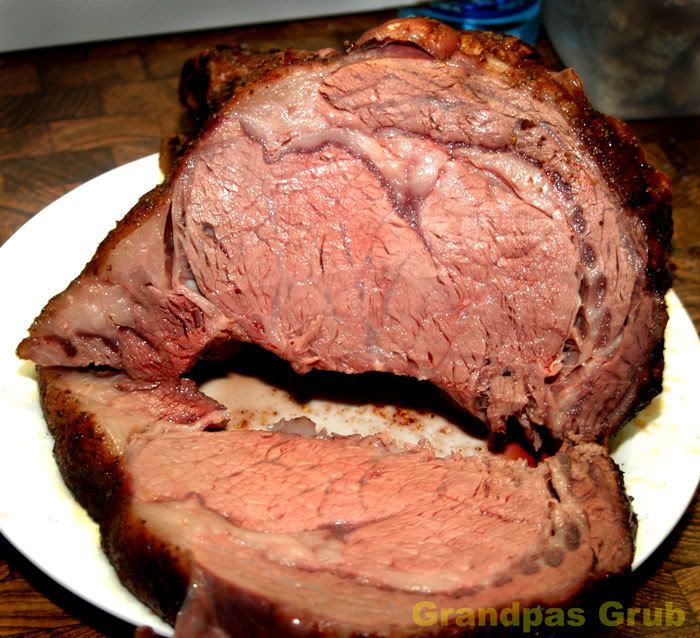Welcome to the EGGhead Forum - a great place to visit and packed with tips and EGGspert advice! You can also join the conversation and get more information and amazing kamado recipes by following Big Green Egg to Experience our World of Flavor™ at:
Want to see how the EGG is made? Click to Watch
Facebook | Twitter | Instagram | Pinterest | Youtube | Vimeo
Share your photos by tagging us and using the hashtag #BigGreenEgg.
Share your photos by tagging us and using the hashtag #BigGreenEgg.
Want to see how the EGG is made? Click to Watch
Sear vs Reverse Sear
Options
Suck Creek Wings
Posts: 112
On Sunday I did my 3rd rib roast since Christmas. The first 2 I did the Reverse Sear and decided to do Sunday's the traditional "sear first" method.
I am now 100% in the camp of Reverse Sear. The primary reason is it's just a lot easier. Getting to 500 and then dropping the temp down to the 300 range takes some time and effort. Starting at 300 and then finishing at 500 is just so much easier.
The end result was virtually no different, so I'm sticking with the easier method.
Just a thought for today.
Take care.
Dave
I am now 100% in the camp of Reverse Sear. The primary reason is it's just a lot easier. Getting to 500 and then dropping the temp down to the 300 range takes some time and effort. Starting at 300 and then finishing at 500 is just so much easier.
The end result was virtually no different, so I'm sticking with the easier method.
Just a thought for today.
Take care.
Dave
Comments
-
I am using the Xer-T method on a regular basis.
SteveSteve
Caledon, ON
-
Reverse Sear is the way to go Can't tell a difference.
-
I was going to do a reverse sear but when it was time I looked and it was just too purdy to sear it and I didn't want to loose the juices. So I didn't.
Now I wonder how/if it would have turned out different.
Thanks for your imput on the two methods.
GG -
another good reason is if the dinner extras are running late then you can hold off on the sear till they are ready, then everything is ready at the same time.
-
Kent, it looks great! How did it aste?
Mitch -
Color is very important to me, and you sure nailed that one. One of the greatest things about a reverse sear (aka end sear, XRET, Finney method) is that you can use it if you need it. Sometimes you do and sometimes you don't.....Happy Trails~thirdeye~Barbecue is not rocket surgery
-
who says you have to sear at all? i see a problem with the sear at the end because the temp probe wires will not handle the heat. pull out the probe and you don't know what your internal temp is when you pull the meat.
plus, with this much cow on the grid, it'll be a little difficult to rearrange to get an even sear all the way around. not to mention the plate setter is in the way
-
Man, that's a beauty. Very nice, GG.
-
i was amazed how nice this was. Better than it looked.

Thanks, Kent -
Wayne,
I would like to have some med well outer edge and I am thinking a sear (reverse) might accomplish this. Here is what it looked like after slicing.
After our discussion (your tutoring) about pastrami, I have been more watchful of the color's and doneness of the cooks to include the bark.
Kent -
I see what your are talking about. Your's looks to be bigge than mine was. I am guessing it would require more cord end to end. Then a careful eye with a thermopen at the ready.
GG -
i think the word sear in this case isnt really the right way to describe whats being done. its more of a very high temp roast thats going on at 500 degrees, no need to remove the platesetter, infact if you do you might get a more sooty taste on the exterior with it as all that grease drops into the fire.fukahwee maineyou can lead a fish to water but you can not make him drink it
-
I sure like the looks of that roast sliced.
 I would like to have some med well outer edge and I am thinking a sear (reverse) might accomplish this.
I would like to have some med well outer edge and I am thinking a sear (reverse) might accomplish this.
If is that is what you are after, I would think that starting out at a higher pit temp, then ramping it down would cause the edges to be more done. In my eyes, the end sear (and the up front sear too) is really a short term technique, used to crisp up the surface while allowing the Maillard reaction to take place, not really to do much in the way of cooking below the surface.Happy Trails~thirdeye~Barbecue is not rocket surgery -
I sure wish I could have sent you a slice.
When I have seen resturant prime rib I have noticed the fat being more of a white color than what was in my picture.
Not sure if that means anything or not.
This was really good tasting and to me looked like it should have looked.
From your description, there was no need to sear. The surface was excelent and very flavorful.
Other than the sear, this was right off of your pages. Thanks for sharing the recipe.
GG -
You know, fat color before cooking is important when grading meats of all kinds. Yellow fat can indicate older stock (on the hoof, not older in time after butchering) but off-white fat is also common in steers butchered too early. It also can be a sign of cattle that are grass fed verses stock that is finished off with grain.
Just not sure if the color after cooking (considering the rendering and all) indicates anything at all. I figure if you are satisfied with what you plate up, that's all that counts.....Happy Trails~thirdeye~Barbecue is not rocket surgery -
It never seems to amaze me with all the things to learn.
The credit for this cook of mine goes to you. I just followed the yellow brick road.
Thanks, Kent
Categories
- All Categories
- 182.7K EggHead Forum
- 15.7K Forum List
- 459 EGGtoberfest
- 1.9K Forum Feedback
- 10.3K Off Topic
- 2.2K EGG Table Forum
- 1 Rules & Disclaimer
- 9K Cookbook
- 12 Valentines Day
- 91 Holiday Recipes
- 223 Appetizers
- 516 Baking
- 2.4K Beef
- 88 Desserts
- 164 Lamb
- 2.4K Pork
- 1.5K Poultry
- 30 Salads and Dressings
- 320 Sauces, Rubs, Marinades
- 543 Seafood
- 175 Sides
- 121 Soups, Stews, Chilis
- 35 Vegetarian
- 100 Vegetables
- 313 Health
- 293 Weight Loss Forum

